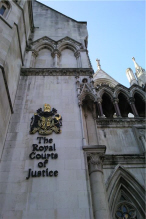Access routes over commons
- Details
 The Court of Appeal ruled in favour of the developers in a case about gaining vehicular access routes over statutory commons in order to enable adjacent development. Paul Wilmshurst reports.
The Court of Appeal ruled in favour of the developers in a case about gaining vehicular access routes over statutory commons in order to enable adjacent development. Paul Wilmshurst reports.
The Appellant before the Court of Appeal in Evans v Wimbledon and Putney Commons Conservators [2014] EWCA Civ 940 was a local resident and co-founder of the friends of Putney Common (“the Common”).
He appealed against a decision that the Wimbledon and Putney Commons Conservators (“the Conservators”) were entitled to grant an easement over the common to a local authority in order to provide access across the Common, which would in turn provide for the development of land (on the other side of the Common) for housing and a school.
The route of the proposed easement, to be granted by deed for access on foot and with vehicles, was to run (with one notable exception of a new turning circle) over an access road that had been constructed in 1911. This proposal included putting down tarmac over the access road, the construction of barriers and other obstructions to deter unauthorised parking and the construction of a new turning circle.
It was contended by the Appellant that the Wimbledon and Putney Commons Act 1871 (“The 1871 Act”) did not provide to the Conservators the power to grant the proposed easement.
The 1871 Act contained the express power for the Conservators to “make and maintain roads and ways as may be in their judgment necessary or proper.” In Housden v Conservators of Wimbledon and Putney Commons [2008] 1 WLR 1172 it had been held by the Court of Appeal that a prohibition on disposing “any part of the common” did not apply if the effect of the grant is not to diminish the physical area of the common as open space.
That was a case about prescriptive rights over the Common. It was said that a court should not take a literal interpretation of statutes regulating commons such as this one but look instead to the spirit and broad aims of the legislation. Although the grant of an easement was a disposition of land (see Interpretation Act 1978 Schedule 2, paragraph 5(b)) the court in Housden held that “the common” did not refer to the land itself or to the rights and interest in it but rather to the physical area of the open space.
In the instant case the Appellant sought to distinguish Housden on the basis that what was proposed was effectively to make a de facto private accessway, with tarmac being put down, together with other obstructions so to exclude the public from the physical space. In Housden the physical state of the relevant strip was to remain unaltered.
Reference was made to the detailed provisions of the 1871 Act and it was submitted, in summary, that there was no power to make roads where this would not be consistent with the duty to maintain the natural aspect of the Common. It was further submitted the that proposals would anyway be a breach of the Conservator’s duty to prevent alteration of the “natural aspect and state of the commons” in that any power to create roads etc. did not extend to doing so merely to facilitate the development of land adjoining the Common.
The court held that the 1871 Act clearly provides a power to implement the proposals but did not itself add an further inhibition on how that power might be exercised other than, as above, the Conservators must consider the roads to be “necessary and proper.” Patten LJ was satisfied that the 1871 Act did not to “require them to defend every blade of grass come what may in the event that it is called upon to consider the exercise of its powers in respect of a proposal which affects the natural environment of the common.”
In coming to a conclusion on the question of whether the proposed scheme fell within the scope of the power Patten LJ, speaking for the court, held that he did not accept that there should be “a narrowly focused exercise in which the only relevant criteria are what is strictly necessary for the maintenance of the Common as open space or…. in which any interference with the existing state of the Common has to be treated as impermissible.”
The Court of Appeal held that the Conservators were entitled to take in account the overall impact of the proposal as a whole and in this case (although not a live issue) it was clear (a) this was just part of a long running history of the development of this particular part of the Common that began more than 100 years ago with the creation of accessways and (b) the overall scheme would have the effect of restoring to grassland areas that were currently used for car-parking and existing access roads.
Therefore there were clear benefits for the Common from the proposed scheme. The court was left with the strong impression that the Appellant was merely raising the objections that he had because he disagreed with the proposed development adjacent to the Common, for which the scheme of access was necessary. The Conservators were entitled to grant the easement as proposed and the roads could be made up accordingly.
Paul Wilmshurst is a barrister at 9 Stone Buildings.
Sponsored articles
Unlocking legal talent
Walker Morris supports Tower Hamlets Council in first known Remediation Contribution Order application issued by local authority
Contracts Lawyer
Legal Director - Government and Public Sector
Lawyer (Planning and Regulatory)
Locums
Poll








































